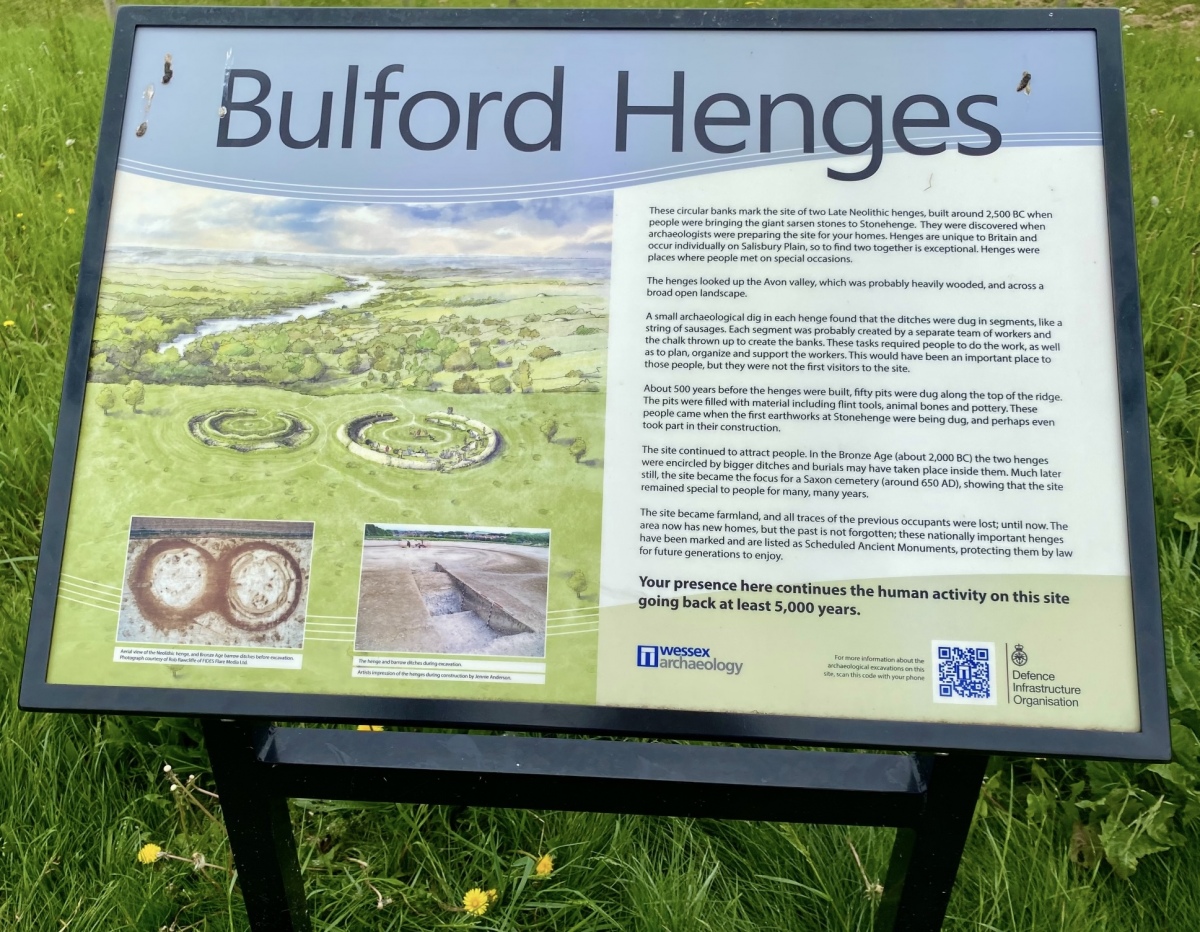[< Gallery Home | Latest Images | Top 100 | Submit Picture >]
260355 Pictures
|
<< Previous Picture | Next Picture >>
Description
Information board
Photo credit: Amanda Chadburn
Bulford Reconstructed Henges Text from Information Board by These circular banks mark the site of two Late Neolithic henges, built around 2,500 BC when people were bringing the giant sarsen stones to Stonehenge. They were discovered when archaeologists were preparing the site for your homes.
Henges are unique to Britain and occur individually on Salisbury Plain, so to find two together is exceptional. Henges were places where people met on special occasions. The henges looked up the Avon valley, which was probably heavily wooded, and across a broad open landscape.
A small archaeological dig in each henge found that the ditches were dug in segments, like a string of sausages. Each segment was probably created by a separate team of workers and the chalk thrown up to create the banks. These tasks required people to do the work, as well as to plan, organize and support the workers. This would have been an important place to those people, but they were not the first visitors to the site. About 500 years before the henges were built, fifty pits were dug along the top of the ridge.
The pits were filled with material including flint tools, animal bones and pottery. These people came when the first earthworks at Stonehenge were being dug, and perhaps even took part in their construction. The site continued to attract people. In the Bronze Age (about 2,000 BC) the two henges were encircled by bigger ditches and burials may have taken place inside them. Much later still, the site became the focus for a Saxon cemetery (around 650 AD), showing that the site remained special to people for many, many years.
The site became farmland, and all traces of the previous occupants were lost; until now. The area now has new homes, but the past is not forgotten; these nationally important henges have been marked and are listed as Scheduled Ancient Monuments, protecting them by law for future generations to enjoy. Your presence here continues the human activity on this site going back at least 5,000 years. Wessex archaeology, Defence Infrastructure Organisation
Photo credit: Amanda Chadburn
Bulford Reconstructed Henges Text from Information Board by These circular banks mark the site of two Late Neolithic henges, built around 2,500 BC when people were bringing the giant sarsen stones to Stonehenge. They were discovered when archaeologists were preparing the site for your homes.
Henges are unique to Britain and occur individually on Salisbury Plain, so to find two together is exceptional. Henges were places where people met on special occasions. The henges looked up the Avon valley, which was probably heavily wooded, and across a broad open landscape.
A small archaeological dig in each henge found that the ditches were dug in segments, like a string of sausages. Each segment was probably created by a separate team of workers and the chalk thrown up to create the banks. These tasks required people to do the work, as well as to plan, organize and support the workers. This would have been an important place to those people, but they were not the first visitors to the site. About 500 years before the henges were built, fifty pits were dug along the top of the ridge.
The pits were filled with material including flint tools, animal bones and pottery. These people came when the first earthworks at Stonehenge were being dug, and perhaps even took part in their construction. The site continued to attract people. In the Bronze Age (about 2,000 BC) the two henges were encircled by bigger ditches and burials may have taken place inside them. Much later still, the site became the focus for a Saxon cemetery (around 650 AD), showing that the site remained special to people for many, many years.
The site became farmland, and all traces of the previous occupants were lost; until now. The area now has new homes, but the past is not forgotten; these nationally important henges have been marked and are listed as Scheduled Ancient Monuments, protecting them by law for future generations to enjoy. Your presence here continues the human activity on this site going back at least 5,000 years. Wessex archaeology, Defence Infrastructure Organisation
No comments. Why don't you go ahead and post one!
To post comments first you must Register!

